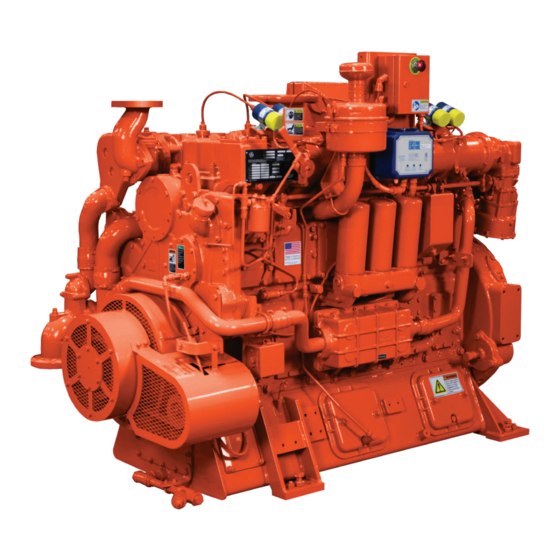
Table of Contents
Advertisement
Quick Links
Visit our internet site,
waukeshaengine.dresser.com to locate the
Waukesha Engine distributor nearest you.
Available to order in
book format.
PLEASE NOTE: If grey lines appear
instead of words, please do the
following. In Acrobat Reader go to
--> File --> Preferences --> General.
Make sure "Use Greek Text Below
____ Pixels" is deselected.
F18/H24 G/GL/GLD/GSID
Repair & Overhaul Manual
FORM 6243
Copyright 1989, 2001, 2002 Dresser, Inc. All rights
reserved
Waukesha Engine
Dresser, Inc.
Waukesha, Wisconsin 53188
Printed in U.S.A. 7/02
Printed on Recycled Paper
Serial No.
Specification No.
This document contains proprietary and trade secret information and
is given to the receiver in confidence. The receiver by reception and
retention of the document accepts the document in confidence and
agrees that, except as with the prior expressed written permission of
Waukesha Engine, Dresser, Inc., it will; (1) not use the document or any
copy thereof or the confidential or trade secret information
therein; (2) not copy or reproduce the document in whole, or in part
without the prior written approval of Waukesha Engine, Dresser, Inc.;
and (3) not disclose to others either the document or the confidential or
trade secret information contained therein.
All sales and information herein supplied subject to Standard Terms of
Sale, including limitation of liability.
WAUKESHA, DRESSER, and WKI are registered trademarks of
Dresser, Inc. VGF and DRESSER logo are trademarks of Dresser, Inc.
All other trademarks, service marks, logos, slogans, and trade names
(collectively "marks") are the properties of their respective owners.
Dresser, Inc. disclaims any proprietary interest in these marks owned
by others.
â
ä
Third Edition
Advertisement
Table of Contents
Troubleshooting



Need help?
Do you have a question about the VGF F18G and is the answer not in the manual?
Questions and answers
Waukesha engine lubrication line from where to start step by step
To start the step-by-step process for lubricating a Waukesha VGF F18G engine:
1. Check oil level: Before each day’s operation, check the crankcase oil level.
2. Use recommended oil: Use oil specifically formulated for gas engines that meets Waukesha’s requirements. Do not use gasoline or diesel engine oils.
3. Monitor oil condition: Use a professional oil analysis program to monitor oil condition regularly.
4. Change oil and filters: Change the engine oil, including oil filter elements and drain the oil cooler, every 1000 hours or sooner based on engine use.
5. Use proper oil at low temperatures: For ambient temperatures below 50°F (10°C), use lube oil and jacket water heaters for proper lubrication and faster engine starting.
6. Avoid synthetic oil: Do not use synthetic oils in digester or landfill gas applications.
7. Inspect for oil breakdown: Regularly inspect areas such as exhaust valve stems, piston ring area, and piston undercrown for signs of oil breakdown.
This answer is automatically generated
Waukesha engine fuel line problem couse and what effect of fule line problem
Fuel line problems in Waukesha VGF F18G engines can be caused by a stuck fuel regulator valve. The effects of this issue include engine misfiring, improper fuel system settings, and failure to deliver rated power. If the fuel regulator valve is stuck shut, it needs to be repaired or replaced to restore proper engine function.
This answer is automatically generated